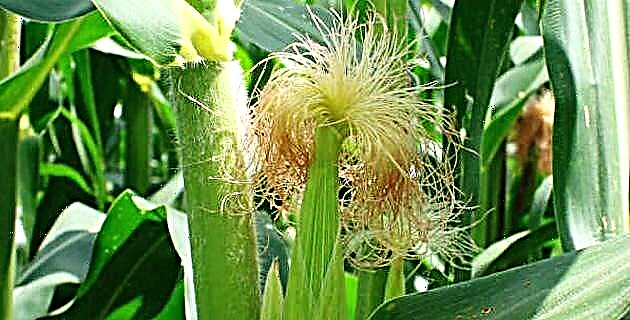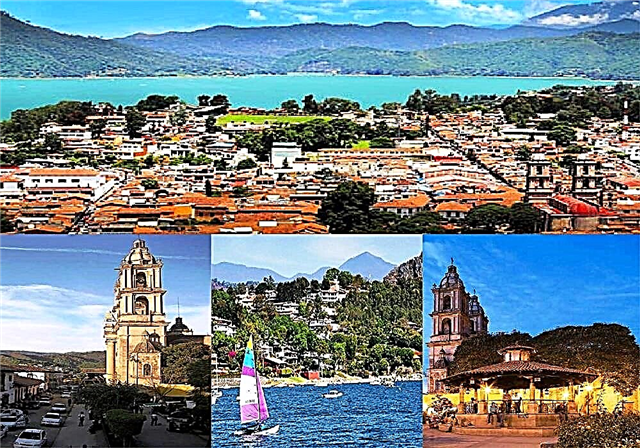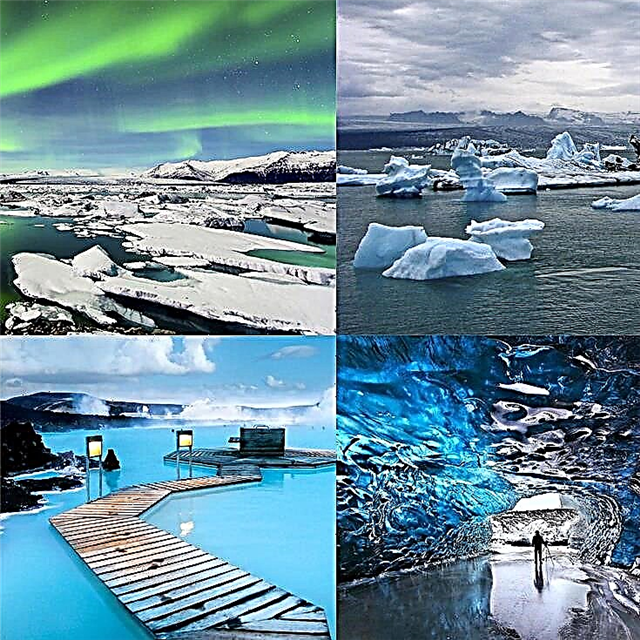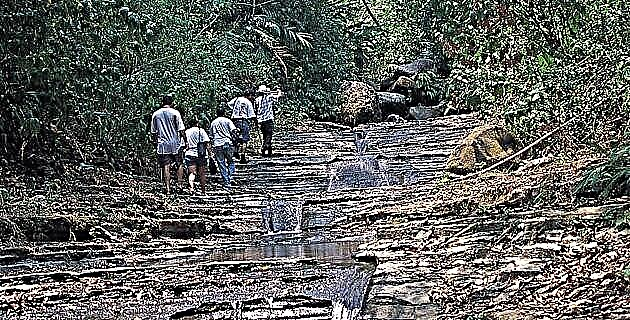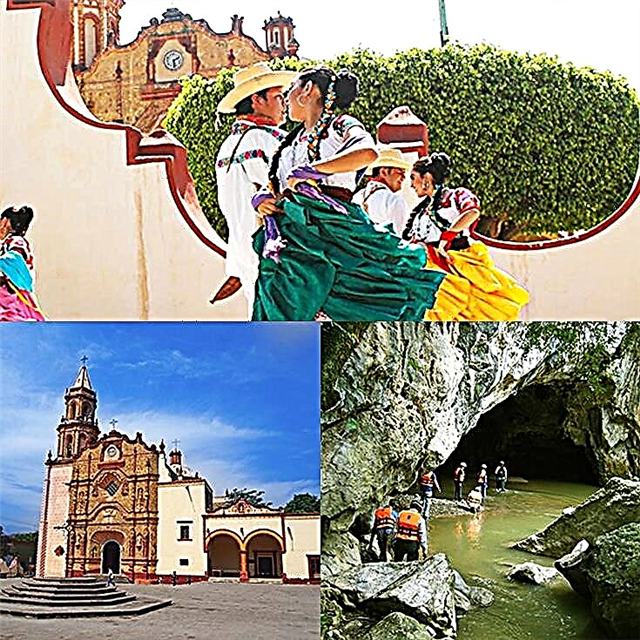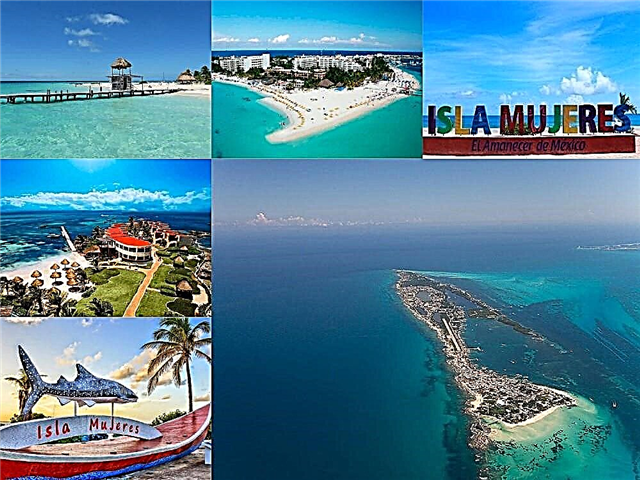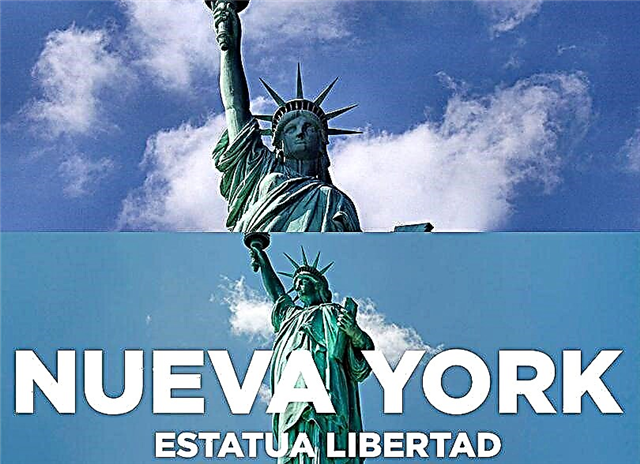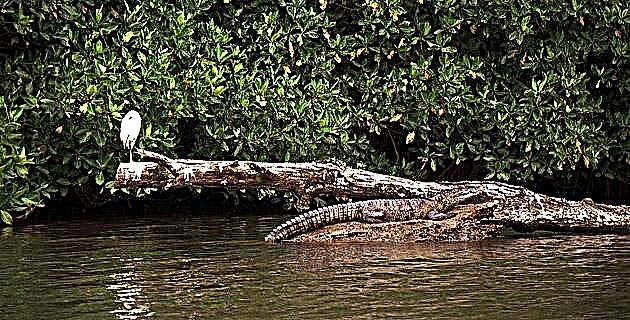
To get to Tecolutla, by road no. 129 you have to travel about 500 km, crossing the states of Hidalgo and Puebla, before reaching Poza Rica where you take the detour to Papantla or go north, if you prefer to go to Tuxpan.
This time we left Mexico City at dawn because we wanted to get to the coast at lunchtime.
A wonderful landscape, full of conifers, is enjoyed during the journey, recommended by day because the fog is notorious in the section between Acaxochitlán and Huauchinango, where there are also rustic stalls selling liquors and regional fruit preserves. By the way, at the height of the Necaxa dam, by the town of San Miguel, some lodgings and restaurants are worthy of a stop to stretch your legs and enjoy the impressive view.
But, as our destination is another, we continue along the winding road, immersed in the mist and already descending, after passing Xicotepec, extensive banana plantations are observed. It is not long before we find the sellers of the typical fried, sweet or salty plantains at the tops, which satisfy our incipient appetite with their peculiar flavor.
Entering Papantla, located 43 km west of Tecolutla, and which was founded by the Totonacs around the 12th century, a sign indicates that only five km away is the archaeological site of El Tajín, and although it is not included in our plans It is too tempting, so we change course to see this pre-Hispanic city discovered by chance in 1785 when a Spanish official was looking for clandestine tobacco plantations.
IN HONOR OF THE GOD OF THUNDER
Upon arrival, in the wide access square to the site, surrounded by commercial premises full of crafts and traditional clothing from the area, the Voladores de Papantla show begins, one of the most striking among Mesoamerican rites, whose secular symbolism is linked with the solar cult and the fertility of the earth. Those who see this ceremony for the first time are amazed at the audacity of the dancers when they climb to the top of a very high trunk and tied by ropes at their waists they descend in 13 circles, imitating eagles in flight, until they touch the ground with their feet.
After enjoying that shocking experience, and to orient ourselves on the layout of the place, we entered the Museum where a didactic model serves as a preliminary guide. They explain that the architecture of this coastal city, of Totonac origin, was characterized by the constant combination of three elements, the slopes, the friezes of niches and the flown cornices, in addition to the stepped frets. Also, they highlight the importance of the Ball Game, a ritual sport, since 17 fields have been detected there.
We lose track of time when we walk among the curious buildings spread over an area of 1.5 km2, formerly occupied mostly by temples, altars or palaces, and of course, we are fascinated by the original Pyramid of Niches, with its 365 cavities without a doubt allusive to the solar year and its multiple cornices, so different from other pre-Hispanic monuments. Our tour ends only when they warn about the next closure of the place, impregnated with the aroma of vanilla, whose bars are sold to tourists.
TOWARDS THE COAST
It is almost dark when we enter Gutiérrez Zamora, in parallel with the estuaries of the Tecolutla River, towards the tourist town of this name. At the Hotel Playa “Juan el Pescador” its owner, Juan Ramón Vargas, president of the Association of Hotels and Motels, awaits us from noon, a faithful lover of his place of origin and a magnificent guide to explore the attractions of the area, more beyond the beaches or the innumerable restaurants with delicious dishes, based on the fruits of the sea.
Precisely, nothing better to calm the voracity of those hours than to please the palate with a delicious shrimp cocktail and a fish fillet with garlic sauce, accompanied by vegetables, after settling in our room overlooking the sea. Later, we take a walk through the quiet streets of this town that with about 8,500 inhabitants, in the high season assimilates almost triple that number of tourists, the majority national and from the same state, as well as from other neighboring areas, such as Hidalgo, Puebla or Tamaulipas.
Each year, in addition, they convene two of the main sport fishing tournaments in the country, that of Sábalo and that of Róbalo, which involve a large part of the inhabitants of both Tecolutla and Gutiérrez Zamora, since their fishermen with their boats move to the contestants and act as the best guides, while its 1,500 rooms are filled, distributed in some 125 hotels, most of them local owners, and more than a hundred restaurants, existing only in the beach area. Likewise, they tell us about another annual event of great relevance for this population, the Coconut Festival, where the world's largest coconut is prepared, since only last year they processed six thousand coconuts and two tons of sugar, among other ingredients. Without a doubt, each celebration gives good excuses to return to this fishing village.
THE PARADISE OF THE MATTERS
One of the charms of Tecolutla are the beaches with public access, since there are about 15 km of shoreline facing the open sea, usually with soft and warm waves, except during the onslaught of the north. But, the great surprise for the traveler is the estuaries of the Tecolutla River, which, even at dawn, we are getting ready to travel in our host's boat "Pataritos". By the way, the nice name of the boat is due to the choice of the eldest of his children, who named it that way when he was just beginning to speak.
There are three most visited estuaries, El Silencio, with five navigable km, fertile in mangroves and of a beauty impossible to narrate in words. Not in vain the name of that backwater, because when the engine is turned off even the faintest buzz of insects or dew drops that fall slowly from the top of the bushes can be heard. Further on, we go to the Estero de la Cruz, for a crystal clear 25 km, where snook is often fished, while the Naranjo estuary, the largest, with about 40 km, crosses cattle ranches and orange groves. It is a bucolic landscape, ideal for bird watching, we see ibis, cormorants, parrots, parakeets, redfish, eagles, hawks, herons or ducks of various species. In truth, a walk through the estuaries encourages full interaction with nature, capable of calming in a single morning all the load of stress brought from the great capital.
On the way back, Juan Ramón takes us to where Fernando Manzano, better known by his countrymen as “Papa Tortuga”, who, at the head of the environmental group Vida Milenaria, has been fighting for years a tenacious battle in the safeguarding of sea turtles, from which he helps to reproduce and release each year between five and six thousand hatchlings from localized eggs thanks to their extensive experience, with the support of many volunteers and their families, on long walks along the surrounding beaches. And before leaving for the Costa Smeralda, we visit a vanilla processing plant in Gutiérrez Zamora, belonging to the Gaya family since 1873, where they explain all the steps necessary to obtain the extracts or liqueurs of this aromatic fruit.
ROAD TO PUERTO JAROCHO
The so-called Costa Esmeralda stretches along the highway towards the city of Veracruz, a lavish route with small hotels, bungalows, camping-grounds and restaurants. We make a brief stop in Iztirinchá, one of the most recommended beaches, shortly before Barra de Palmas, where it is possible to practice fishing and rest at ease. From there the road goes away from the coast, to Santa Ana, where we find some lodgings and simple feeders, although it is in Palma Sola and Cardel where we find again a greater variety of lodgings. There we load fuel and the four-lane highway that leads to the port begins, although those who want to spend the night on a quiet beach can turn to Boca Andrea or Chachalacas, one of the most famous for its huge dunes.
A STRONG COFFEE ...
As soon as we enter the city, we go to the traditional cafe La Parroquia to have a delicious coffee, very strong, on its terrace overlooking the extensive boardwalk. We are in the most vital heart of the state of Veracruz, one of the richest in the country, full of oil, textile and beer industries, sugar mills, productive agricultural and livestock lands, of great boom in colonial times when the rich Fleet of New Spain left its port in call towards the bay of Havana, with ships loaded with gold, silver and any type of products coveted by the Spanish crown.
Alexander de Humbolft described this city in his Political Essay on the Kingdom of New Spain as "beautiful and very regularly built." And at that time it was considered the "main gate of Mexico", through which all the wealth of these vast lands flowed to Europe, since it was the only port in the Gulf that allowed easy access to its interior. That secular gallantry is preserved in its historic center, where the notes of the son jarocho mix at dusk with those of the adoptive danzón, in the portals full of locals and tourists, for whom the night has no end. At dawn, we enjoy the spectacular boardwalk in front of the hotel in Boca del Río, and before continuing our route south, we visit the Aquarium, undoubtedly one of the best in the world, with numerous marine species. It is an essential site for any nature-loving traveler.
TOWARDS ALVARADO
We take the path further south. We take a look at Laguna Mandinga, whose riverside restaurants are still closed and we continue to Antón Lizardo, which preserves the character of an authentic fishing village.
About 80 km away, Alvarado awaits us, one of the most picturesque places in the region, with a good gastronomic reputation, because there it is possible to eat any type of seafood and the most diverse varieties of fish at truly ridiculous prices, with a gourmet quality .
Before knowing this place, I knew about it from the verses of the poet Salvador Vives, who described it as “A small port, a fishing village that smells of seafood, tobacco and sweat. White farmhouse that goes along the shore and looks out over the river ”. Indeed, as if it had been frozen in time, its historic center retains an unusual peace for the busy today. Majestic white houses, with wide and shady corridors, surround the central square, where the parish temple and the opulent municipal palace stand out. It is enough to walk a few alleys to border the port, full of fishing boats, some already rusted and others always ready to go out to sea, since fishing is their main source of income, since tourism has not yet discovered this place as it deserves. . The Alvarado lagoon and the Papaloapan river come together to offer us an unusual landscape.
Of course, before continuing the march we treat ourselves to a succulent rice to the tumbada, a kind of Alvaradeña version of the traditional paella, but broth, prepared with seafood and fish, as well as some exquisite crab toasts. Few foods like this, in quality and quantity.
DISCOVERING BEACHES
From here the road extends between extensive reed beds and trucks loaded with sweet grass constantly cross for processing in the mills, whose chimneys exhale an infinite thread of brown smoke, a sign of the incessant work in their sugar mills. In the distance you can see the mountainous area of Los Tuxtlas, but since we want to know as much as possible about the nearby beaches, after passing through Lerdo de Tejada and Cabada we turn left along a narrow road, which after more than an hour on the way it will take us to Montepío.
But, a little before we discovered a small sign: "50 meters, Toro Prieto." Curiosity wins us over and entering the dirt we go to a beach where we only find a rustic ecological camp, the Pirate's Cave, and some inexpensive kitchens, which open when the occasional customers arrive.
Further on is the Roca Partida beach, one of those places that makes you want to stay forever. There the fishermen offer a tour under a cave, which, according to what they explain, can be crossed by sailing at low tide.
Again, we return to the road and almost at dusk we arrive at Montepío beach, where there are several hotels and guest houses, as well as a couple of palapas to eat in front of the sea. The silence is so great that the music of the few houses in the nearby hamlet can be heard on the terrace of the accommodation we chose to spend the night, while we enjoy counting the stars that twinkle in a clean celestial vault where a splendid moon still shines.
THE END OF THE JOURNEY
We asked the hotel manager about the best coasts we could find before Catemaco and he suggested Playa Escondida and Hicacos. Thus, very early we left for the famous city of witches, along a dirt road, quite rugged, and not recommended to travel at night. However, it is worth the jump, because shortly after we find the detour to the first of the aforementioned beaches, its name is not in vain, since it is a fabulous corner in the middle of nowhere, immersed in lush vegetation, at the Which is only possible to access by going down a steep and irregular staircase, or by sea by boat. In truth, it is a magical place, where we would like to be shipwrecked and never be rescued.
But, our appetite catches our attention and we continue to Playa Hicacos, one of the few almost virgin places where there is a simple tourist inn, and also a small restaurant run by a friendly family, capable of preparing one of the juiciest fish fillets that we have tasted all the way. By the way, when we asked them “if it was fresh”, the answer sounded like a joke, “it's not from today, but it is from yesterday afternoon”.
The trip ended, although not before loading gasoline in Catemaco, where we were left desires to cross to the Island of the Monkeys, or to visit one of its witches. But, time set the tone and thus the return to Mexico City was imposed. However, this route allowed us to enter unsuspected places, in estuaries and beaches that still have immense potential for the discovery of many travelers, in love with the incalculable natural beauties of Mexico.

